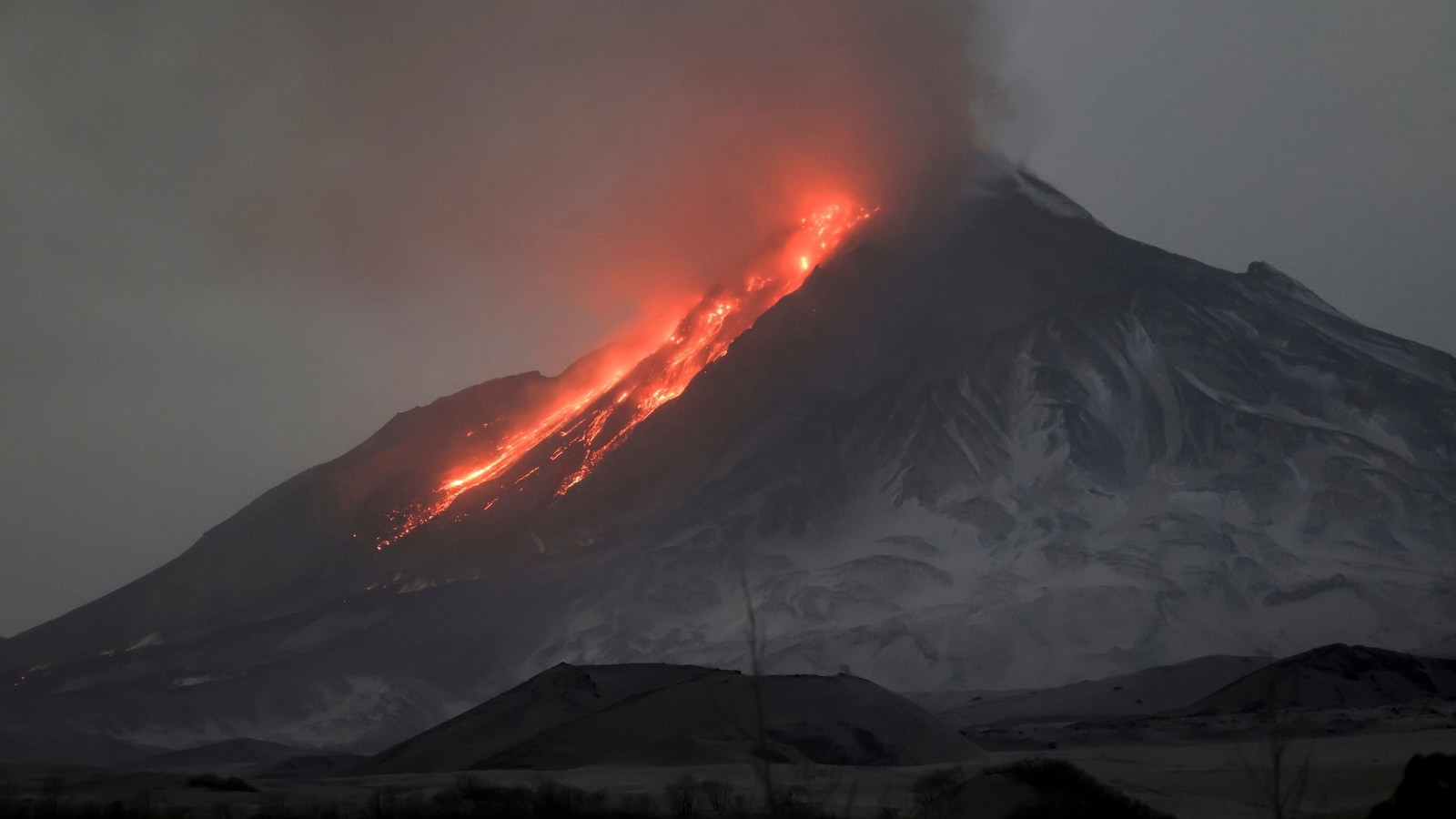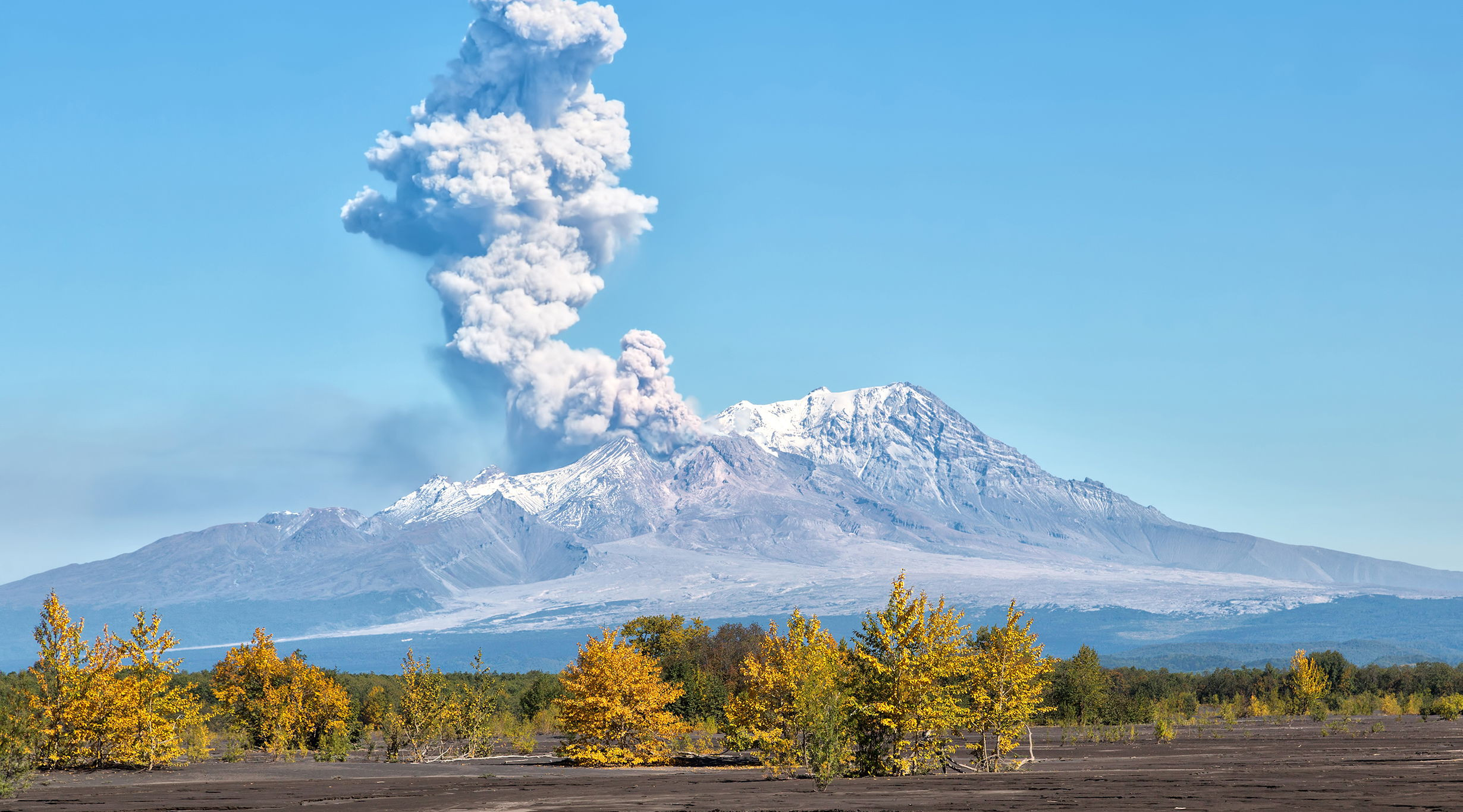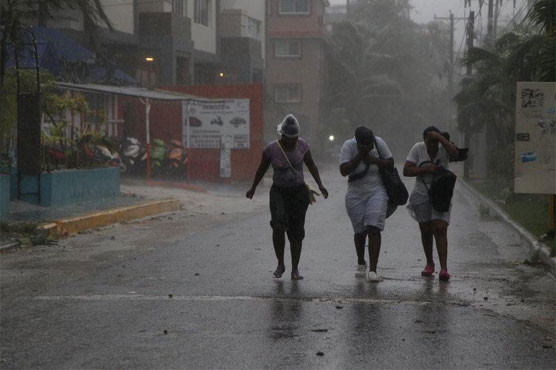A powerful 7.0 magnitude earthquake early on Sunday morning has triggered a volcanic eruption in the Kamchatka peninsula. The area surrounding the Shiveluch volcano, on the far-eastern coast of Russia, was covered in a layer of ash following the eruption. There were no reports of damage or injuries in the immediate aftermath of the quake.
A volcano near a major naval base on Russia's eastern coast erupted early Sunday after a powerful magnitude-7.0 earthquake struck in the Pacific about 63 miles away, according to Russian state-run media. It briefly triggered a "code red" warning for aircraft.
The volcano is about 280 miles from Petropavlovsk-Kamchatsky, a coastal city of more than 181,000 people in Russia's eastern region of Kamchatka. The city is surrounded by volcanoes and sits across a bay from an important Russian submarine base.
The Ebeko volcano located on Kuril Islands also spewed ash 1.5 miles high, the institute said. It did not explicitly say whether the earthquake touched off the eruptions.
A "code red" ash cloud warning briefly put all aircraft in the area on alert, the Kamchatka Volcanic Eruption Response Team reported. A separate report on Sunday carried by Tass said that no commercial flights had been disrupted and there was no damage to aviation infrastructure.
The U.S. Geological Survey said the earthquake occurred 18 miles below the surface of the Pacific Ocean. Its epicenter was about 63 miles east of Petropavlovsk-Kamchatsky. There were no early reports of damage or injuries from the quake.
The quake prompted a tsunami warning that was later lifted.
The U.S. National Weather Service's Pacific Tsunami Warning Center in Honolulu initially warned that hazardous tsunami waves were possible for coasts within 300 miles (480 kilometers) of the earthquake epicenter, but later announced the threat had ended.
The center said minor sea level fluctuations could occur in some coastal areas near the earthquake site for several hours.
The Shiveluch Volcano Eruption
The eruption of Shiveluch, one of Russia's most active volcanoes, was triggered by the powerful earthquake that struck off the coast of the Kamchatka peninsula. The volcano spewed a massive plume of ash that reached 5 kilometers (3 miles) into the sky, causing a brief "code red" warning for aircraft.
The ash cloud stretched over 490 kilometers (304 miles) east and southeast of the volcano, prompting the Kamchatka Volcanic Eruption Response Team to issue a “code red” ash cloud warning. This warning briefly put all aircraft in the area on alert.
Earthquake and Potential Aftershocks
The 7.0 magnitude earthquake occurred at a depth of 6 kilometers (3.7 miles) under the seabed, with the epicenter 108 kilometers (67 miles) southeast of Petropavlovsk-Kamchatsky, the nearest city. While there were no immediate reports of injuries, Russian scientists have warned that the tremors in the area may be a prelude to an even stronger earthquake. The Institute of Volcanology said a potential second quake could come “within 24 hours” with a magnitude approaching 9.0.
The Aftermath
Following the earthquake, a tsunami warning was issued for coastal areas within 300 miles (480 kilometers) of the epicenter. However, the threat was quickly lifted. There were no reports of significant damage or injuries from the quake, but buildings in Petropavlovsk-Kamchatsky, a port city of more than 181,000 people, were reportedly left ‘shaking’. The city sits across a bay from an important Russian submarine base.
A Region Prone to Seismic Activity
The Kamchatka peninsula is part of the Ring of Fire, a region in the Pacific Ocean known for its frequent earthquakes and volcanic eruptions. Shiveluch is one of the biggest and most active volcanoes in the region, with a history of catastrophic eruptions. In 1854 and 1956, large parts of the lava dome collapsed, creating devastating debris avalanches.
The USGS confirmed that the earthquake occurred as “the result of reverse faulting”, a common occurrence in this region. They highlighted that the Pacific plate is moving west-northwest with respect to the North America and Eurasia plates, with some authors dividing the region into several microplates that together define the relative motions between these larger plates.
A Reminder of Nature's Power
The events in Kamchatka serve as a stark reminder of the immense power of nature and the importance of being prepared for natural disasters. The region's history of volcanic activity and earthquakes means that residents and authorities are well-versed in dealing with such situations. However, the potential for a larger earthquake raises concerns and underscores the need for continued vigilance.
Despite the dramatic events, there were no reported injuries or significant damage, which is a testament to the region's preparedness and the resilience of its people. The event serves as a reminder of the fragility of our planet and the importance of understanding and mitigating the risks posed by natural disasters.


















